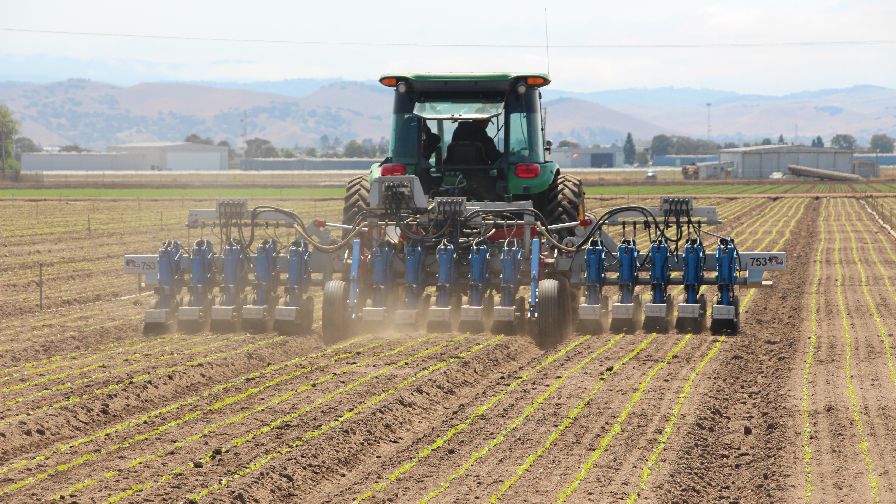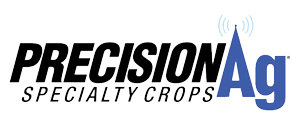It’s Springtime in Specialty Crop Automation

An autothinner at work in a Salinas Valley lettuce field.
Agriculture is going through an equivalent of what the computer industry went through in the 1970s and 1980s. That’s when Steve Jobs and Steve Wozniak were creating the first Apples in Job’s childhood home’s garage, Bill Gates was dropping out of college to build Microsoft, and a bit later, Michael Dell was assembling more affordable computer parts in his Austin, TX, apartment..
Today, you’re seeing a similar wave of innovation and toothpaste-and-spackle problem solving in specialty crop automation. Talk to those in the know about the most exciting automation, and the word “garage” shows up a lot.
Is It Safe to Buy?
One drawback of this heady wave of new ideas is that it’s tough to recognize which companies will be the Apple, Microsoft, and Dell of ag tech. There’s a risk that companies you fall in love with may not be around in a few years.
Daniel Butler, Pacific Ag Rentals in Salinas, CA, is a great source for advice on how to pick the right equipment for you. The company sells automation to growers, as well as allowing companies to rent their services to use the equipment on their fields. Being able to vet automation is key to the company’s profit strategy.
“Take baby steps. Don’t be the first in. Make sure the technology is vetted,” Butler says, counting off the recommended steps. “Make sure that it’s a labor-reducing, cost-saving technology before you get in. That it gets the work done.”
How, exactly, can you vet such new equipment?
“Companies do trials and demonstrations,” says Richard Smith, Farm Advisor, Vegetable Crop Production & Weed Science.
Shows like Growing Innovations and Southwest Ag Summit also are valuable, Smith says, since you can see the equipment demonstrated.
“You can see if it makes sense for you or if it’s something you can modify to your own needs,” Smith says.
Butler also suggests you visit peers who are already using the equipment.
“If it’s already in the field with other growers who have taken the risk, and it’s equipment with a company who stands behind it, ensuring it’s a viable technology, that’s a good first step,” Butler says. “But again, it boils down to these key features: it reduces labor and costs.”
Which Equipment Is Catching On?
Let’s look at some of the more intriguing products coming onto the market now.
Automated Thinners. The vegetable industry hasn’t adopted automation in a slow, steady way, Smith says. Growers were hesitant for years, then in 2011, lettuce growers began embracing auto thinners in a big way.
“It was nothing, then a big surge,” he says.
The turning point, he thinks, was the Southwest Ag Summit where growers were able to see an auto thinner in action and seeing that it worked.
Butler and Smith both think auto thinners are the most commonly adopted automated field equipment at this point.
“If it wasn’t the thinning technology changing the minds of growers, I don’t think we’d be seeing the adoption of other technologies as rapidly as we’ve seen in the past two years,” Butler says.
Automated Weeders . The new weeders hitting the market get into the plant line itself, removing weeds while leaving the desired plant in place. Both Butler and Smith see auto weeders as the next widely adopted equipment for the vegetable market.
Automated Harvesters. Like auto thinners, auto harvesters have been around a while, primarily used on destructive harvest crops like lettuce and carrots. Companies are working hard to develop auto harvesters that can work on repeated passes like strawberries.
Plant Tape. This technology, which unfurls a tape of perfectly spaced transplants, is gaining popularity. The company is testing as many crops as it can to see which transplants can successfully be grown using Plant Tape. A test plot at Tanimura & Antle trialed several new crops for PlantTape, including beets, Brussells sprouts, and celery.
Cauliflower Leaf Stitcher. One company that has that garage bona fides is Flor. It has introduced what can only be described as a sewing machine for cauliflower crops.
The machine lifts leaves from both sides of the plant, then stitches the leaves together along the entire row. The cauliflower head is protected from the sun, even if the leaves wilt somewhat. And crews no longer need to hand wrap each plant.
The machine stitches four rows at a time.










